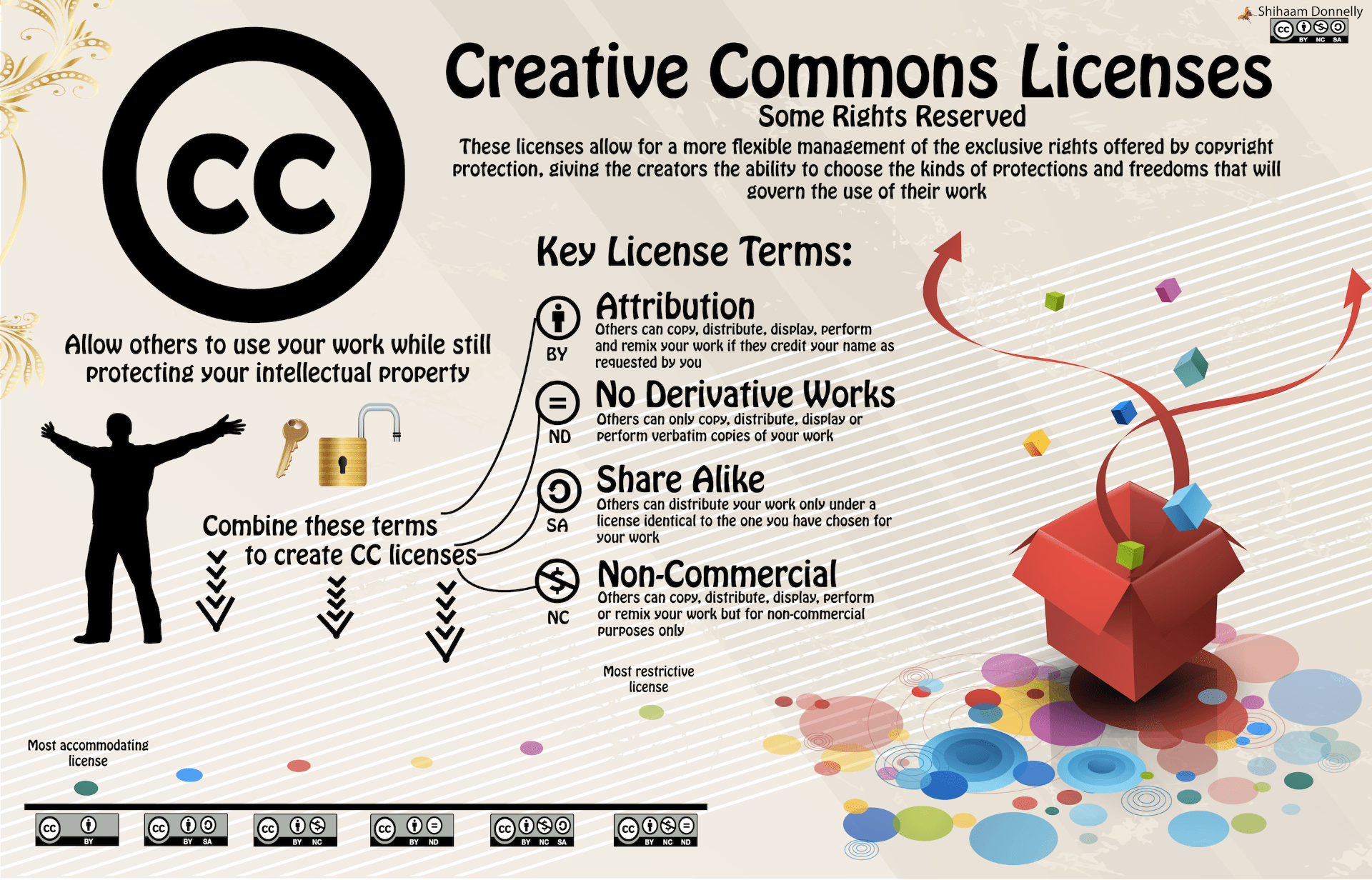In your teaching, you often would like to share legitimately with your students articles, video, music, images, and other intellectual property created by others. Sorting out what you can or can’t do is often confusing, and things are not clear cut on the web. Lack of clear-cut answers may translate into delays, doubts, fear of liability, and decisions to err on the side of caution and non-use. But frequently you do not need to get permission or pay a fee. Use rights may have been licensed by your library or reserved under law. Or you can choose to use material available under Creative Commons – what is sometimes called “copyleft.”.
In many cases, you can eliminate the need for permission or fee by simply giving your students a link to the work instead of making copies of it. For example:
- Your school library already may have paid for a subscription license that entitles you and your students to online access. Simply link to these resources.
- Even if the library hasn’t purchased access, the work may be available for free on a legitimate Web site, such as your institutional repository or another online open archive, the author’s homepage, or an open access journal.
- Check out resources from the Association of Research Libraries.
Fair Use
To ensure a balance of the rights of copyright owners and the public interest, the law allows you to use copyrighted works without permission — regardless of medium — when evaluation of the circumstances suggests the use is fair.
This “fair use” provision of copyright law doesn’t provide hard and fast rules to tell you whether a use qualifies as fair. Instead, the unique facts regarding a use lead you to a reasoned conclusion. Your evaluation should weigh four factors:
- Purpose and character: If your use is for teaching at a nonprofit educational institution, this is a factor favoring fair use. The scale tips further in favor of fair use if access is restricted to your students.
- Nature of copyrighted work: Is the work fact-based, published, or out-of-print? These factors weigh in favor of fair use.
- Amount used: Using a small portion of a whole work would weigh toward fairness. But sometimes it may be fair to use an entire work (such as an image) if it is needed for your instructional purpose.
- Market effect: A use is more likely to be fair if it does not harm the potential market for or value of the copyrighted work. But if it does, this could weigh more heavily against fair use than the other factors.
Consider each of these factors, but all of them do not have to be favorable to make your use a fair one. When the factors in the aggregate weigh toward fairness, your use is better justified. When the factors tip the scales in the other direction, your need to obtain permission from the copyright holder increases. Don’t worry that the answer isn’t crystal clear. Just decide whether the factors weigh enough toward fairness so that you are comfortable not seeking permission. Some suggest reliance on the “golden rule” — if you were the copyright holder, would you see the use as fair and not expect to be asked for permission?
Video is the murkiest area of copyright. While one could show a video they had purchased in a classroom as fair use, streaming it over the internet is considered “distribution” and therefore a violation of copyright, even if you had purchased a single copy. It therefore is best to find the video already online and link to it.
Creative Commons is an organization set up to expand the range of creative works available for others to build upon legally and to share. The organization has released several copyright licenses known as Creative Commons licenses. These licenses allow creators to communicate which rights they reserve, and which rights they waive for the benefit of recipients or other creators.
Creative Commons defines the spectrum of possibilities between full copyright and the public domain – from all rights reserved to no rights reserved. Their licenses help you keep your copyright while allowing certain uses of your work — a “some rights reserved” copyright.
When published to the web, the author of the text, image, video, or audio file will choose from a set of conditions they wish to apply to their work:
You (and your students) can therefore use works you and they find online in your course as long as you follow their licensing condition (attribution)
Creative Commons

